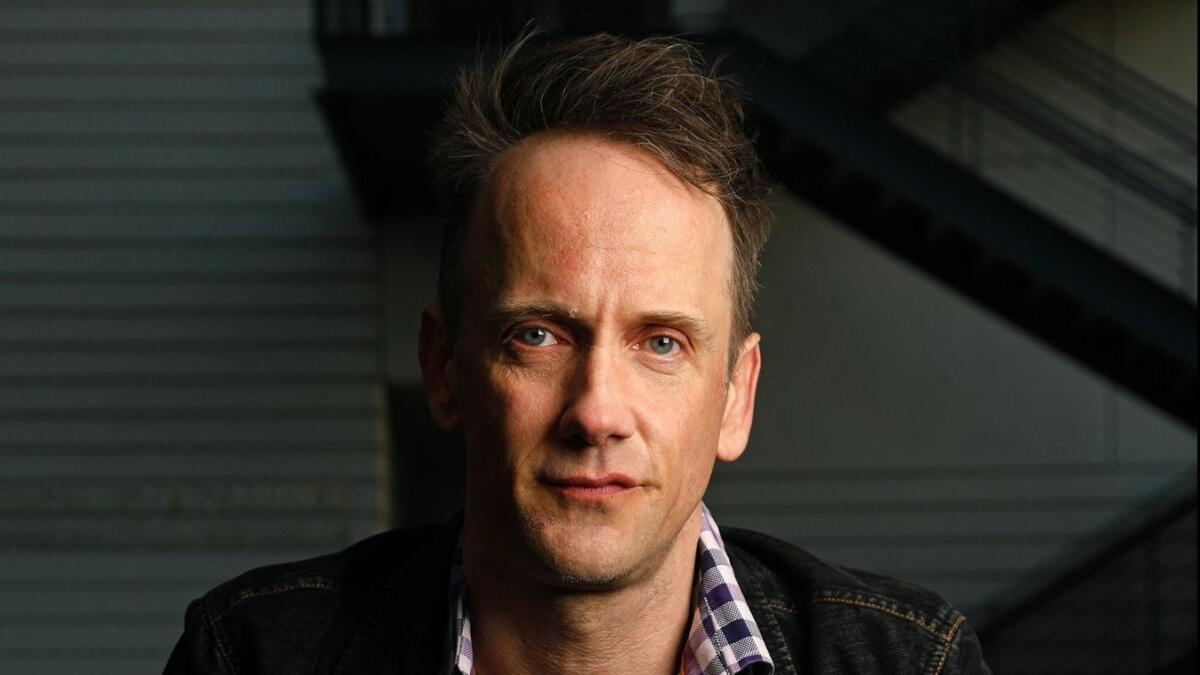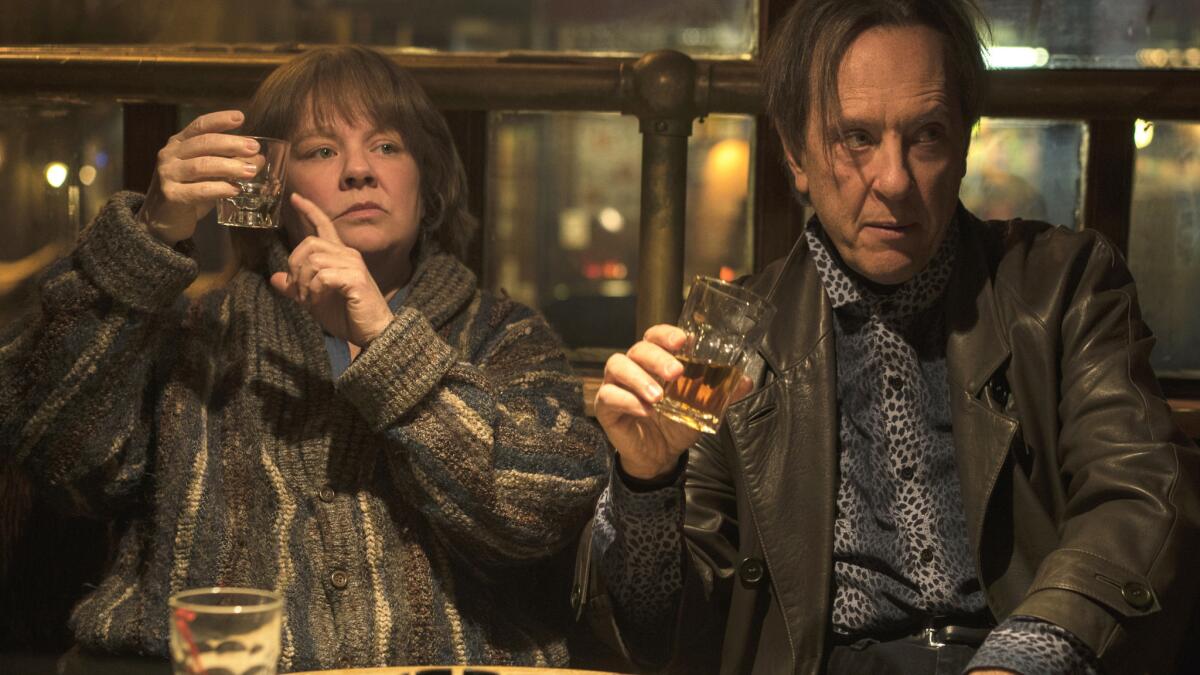‘Can You Ever Forgive Me?’ co-writer went for broad — and got an Oscar nod in the process

- Share via
A common myth about artists is that we work for the love. As a writer in the commercial arts, I love my work, to be sure, but I am also out to make a buck. The ideal is a livelihood doing what I love. I say no to most projects that come across my desk because they speak to a niche crowd. I want my stories to speak to as broad a market as possible for the living on offer.
Often the people holding the purse strings believe that to speak to a broad audience one must dumb the work down. But in doing so, we have created something dumb and exclude those who want authenticity and something to chew on in their entertainments.
I respect the audience too much to do that. In courting a broad market, I craft story to play lightly to the good-time crowd and reward those who gaze deeper. On paper, the story of a lesbian cat-lady biographer might seem “niche,” the sort of movie that plays at a few gay and lesbian film festivals and vanishes. I don’t want to write those movies, because I want to make a living.
The producers of “Can You Ever Forgive Me?” approached me, having read an early play of mine, a roman à clef about my crotchety bohemian New York friends. I was delighted on opening Lee Israel’s memoir of her life of crime. I recognized that the character and situation had enough universal elements to speak to anybody.

Whether you are a “look at me” alpha or community-minded beta, all of us feel overlooked and out of step with changing times. Anyone can relate to the feeling of not having enough means to support your life’s desires.
Though our lives were dissimilar on the surface, I knew Lee from Page One. I was a brave choice to write the film, for I was best known for bringing puppet angst to Broadway with “Avenue Q” and for my unexpectedly successful side job until my writing paid the bills: dancing atop downtown bars collecting tips in my athletic socks.
To settle into a 9-to-5 job would mean surrendering my dreams. So like Lee’s transformation to a life of forgery, I went with the job that offered itself to me. That it was a rascally job was part of its charm. And, Lord knows, I too knew of those days when the crinkled bill in my pocket was the mouth of my revenue stream. So what does one do then? One hustles!
And in the hustle I discovered character simply based on my knowledge of New York’s hidden geography. Many events in the memoir take place in Julius’ Bar on Waverly and 10th Street in the Village, a bar that is authenticity itself, for it has changed little since Prohibition days. It is perhaps my favorite bar in Manhattan. Lee’s accomplice, Jack Hock, was not fleshed out in the memoir, but I knew she met him there. So in summoning character, I imagined him across the street from Julius where the rent boys used to line up back in the day, the cars pulling up to make an arrangement, then whisking their prize into the night.
I saw Jack among them. He would go into the bar to warm up and have a drink and a laugh. And his crisis was his age: the teeth need bleaching, now, and the cars aren’t pulling up as much as they once did. None of this is in the final version, but that situation is everywhere in the mood of Marielle Heller’s magnificent directorial execution.

FULL COVERAGE: Get the latest on awards season from The Envelope »
I was thrilled when Lee liked my take on her memoir. The movie kept almost happening and then going to rest. I almost gave up on seeing it made. Nicole Holofcener did a wonderful rewrite that added further richness to the story while keeping all of the values I held dear to speak to the broad audience market. I am far from a precious writer: Again, I want to make a buck! And Nicole’s perspective only brings the film wider appeal.
We chuckle together in light of the awards and acclaim we’ve received. “I don’t feel like I really deserve this,” I wrote her, and she wrote back, “Me neither!” Neither of us feels like it’s our movie, for it is Marielle’s as well, and then it is Melissa’s and Richard’s and on and on in the list of ingredients that make successful collaboration.
Collaboration isn’t always about artists smoking cigars together till the wee hours, hashing out a story. Collaboration also happens in shifts. It’s successful when the artists put the audience experience first.
For that is the definition of good taste: the curation of the audience experience. And I was incredulous on seeing the final cut that the movie was executed with such excellent taste all the way to the end. Good taste naturally speaks to a broad market and leads to long-run success, and to a living for yours truly and the rest of us in the credits.
More to Read
From the Oscars to the Emmys.
Get the Envelope newsletter for exclusive awards season coverage, behind-the-scenes stories from the Envelope podcast and columnist Glenn Whipp’s must-read analysis.
You may occasionally receive promotional content from the Los Angeles Times.










